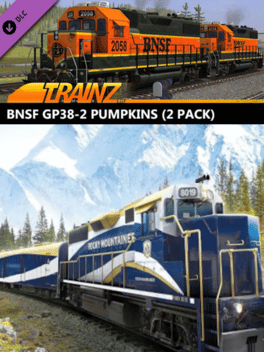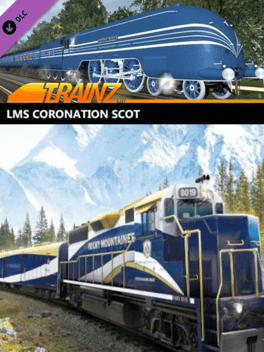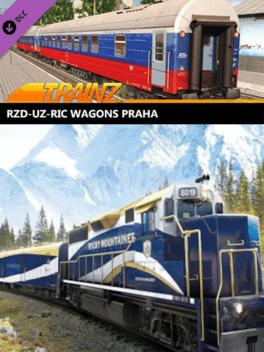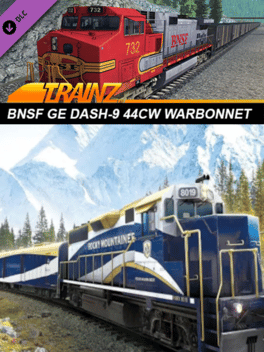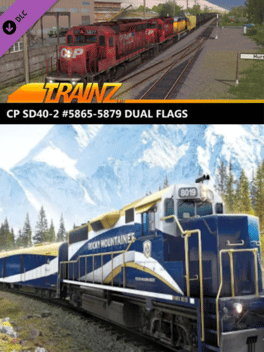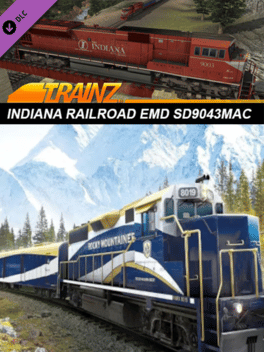Most Popular Simulator Games - Page 415
-
Trainz Railroad Simulator 2019: BNSF GP38-2 Pumpkins
2019
Climb on board your new GP38-2 BNSF engines and learn to operate the locomotives. This detailed session will make you an expert Train driver and best of all, you get to experience it all driving the beautifully detailed GP38-2 BNSF -
Trainz Railroad Simulator 2019: CFR Marfa Gbs/Gbgs Freight Car Pack
2021
A pack of 24 high detail Eastern-European freight wagons with custom loads, custom sounds, and a custom industry object. -
Trainz Railroad Simulator 2019: Chinese Electric SS4 Locomotive Pack
2019
The Shao Shan 4 (SS4 improved) electric locomotive is one of the most powerful DC electric locomotives in China. -
Trainz Railroad Simulator 2019: LMS Coronation Scot
2019
Take control of one of the iconic British Locomotives and travel the length of the country. -
Trainz Railroad Simulator 2019: Victorian Railways V499 - Baldwin Built
2019
Victorian Railways V499 2-8-0 Baldwin Compound in Baldwin Green and Canadian Red. -
Trainz Railroad Simulator 2019: RZD-UZ-RIC Wagons Praha
2020
The RIC and UZ passenger wagons are made in compliance with the highest quality standards and precision. -
Trainz Railroad Simulator 2019: Amtrak P42DC - Phase IV
2019
Amtrak P42DC locomotive in Phase IV livery. Feature full custom cab, automatic running numbers, animated wipers, gecko script, and more. -
Trainz Railroad Simulator 2019: ITC GP7 Phase I & II (2 Pack)
2019
This session allows you to jump in and drive the ITC GP7 Phase I and II locomotives in easy or realistic mode. -
Trainz Railroad Simulator 2019: TE3-1072
2019
The legendary TE3 locomotive is made in compliance with the highest standards for quality and precision. This is a replica of a locomotive TE3 series. -
Trainz Railroad Simulator 2019: DRG Class 05 Steam
2019
3DZUG takes you directly into the driver's cabin of one of the most elaborate engines ever created for Trainz. -
Trainz Railroad Simulator 2019: SNCF BB 75000
2019
The SNCF BB 75000 (also known as the SNCF BB 475000) are 4 axle diesel electric locomotives ordered in 2000 by SNCF for freight operations to renew its aging fleet. -
Trainz Railroad Simulator 2019: BNSF GE Dash-9 44CW Warbonnet
2019
Jump straight in and drive the BNSF GE Dash-9 44CW Warbonnet in 'easy' or 'realistic' mode. -
Trainz Railroad Simulator 2019: PRR GP9 (2 Pack)
2019
This session allows you to jump in and drive the PRR GP9 locomotives (with Early and Late liveries) in easy or realistic mode. -
Trainz Railroad Simulator 2019: Amtrak F40PH 2 pack
2019
Amtrak F40PH locomotive two pack, with Phase II and Phase III liveries. Feature full custom cab, automatic running numbers, animated wipers, gecko script, and more. -
Trainz Railroad Simulator 2019: Canadian Rocky Mountains Baker Crk to West of Calgary
2021
This instalment covers a stretch of the CP Laggan Subdivision in the region around Banff and Canmore. -
Trainz Railroad Simulator 2019: CP SD40-2 #5865-5879 Dual Flags
2020
Drive the CP GMD SD40-2 locomotive, numbers 5865-5879, built in 1984 for CP Rail. Featuring many exact details found on the real locomotives, including CP specific cooling pipe, Locotrol antenna array, open bearung EMD HTC trucks, and more! -
Trainz Railroad Simulator 2019: Andrushivka - Vinnitsa UZ
2019
East European railway. The route runs along the vast expanses of the Ukraine among the picturesque fields, forests and villages. -
Trainz Railroad Simulator 2019: Indiana Railroad EMD SD9043MAC
2019
This session lets you jump straight in and drive the Indiana Railroad EMD SD9043MAC in 'easy' or 'realistic' mode. -
Trainz Railroad Simulator 2019: Appen
2019
"Appen" is a fictitious route set in West Yorkshire (or should I say the West Riding) in the 1950 - 60's. Appen represents an industrial town located between Leeds and Bradford served by the London Midland with services from the North Eastern region of British Railways. -
Trainz Railroad Simulator 2019: Aerotrain
2019
Gone but certainly not forgotten. The GM Aerotrain addon pack takes you back to the streamline era when this stylish train toured the railroads of the USA as a proposed means to the future of passenger haulage.
